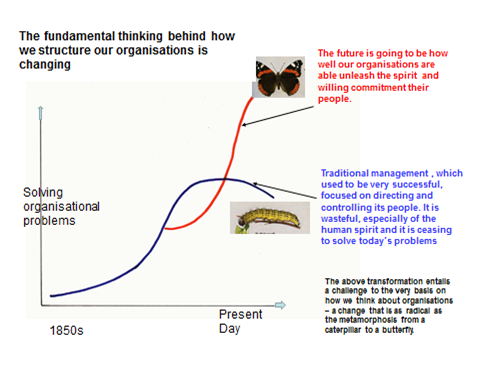In-band vs Out-of-band Change in Technology Businesses
[From the Archive: Originally posted at Amplify.com Jan 2, 2011]
If Change Is A Normal Condition, Why Do So Many Businesses So Often Regard It As Something Extraordinary?
@alshalloway‘s recent post (see below) on the problems with BCUF (big change up front) resonates with me on a number of levels.
Over the years, I’ve been involved with, or seen from “over the fence”, more change projects and programmes than I care to remember. And in line with the statistics, few of them have been truly successful.
One recurring theme has been that of the change initiative as a one-off event. Maybe that was an understandable viewpoint back in the day, when changes in the external business environment (technology, regulation, market demand, etc.) moved at a much slower pace.
But nowadays, the climate in which most (technology) businesses operate is much more volatile, demanding much more frequent change (and thus many more, and more frequent, change initiatives). Actually, it’s got to the point now where many organisations have so many change initiatives running concurrently they’ve lost all semblance of effective control over them.
In my public talks, presentations, workshops, etc. I use the term “out-of-band” (OOB) change initiatives to refer to these discrete, one-off change projects that happen outside of the normal running of the business (a.k.a. Business As Usual or BAU).
Out-of-band change is the norm in Analytic organisations (by which I mean organisations where the prevailing collective mindset – or perspective on the world of work – is Analytic in nature. See The Marshall Model and a number of other posts on this blog for a fuller explanation).
Synergistic organisations, on the other hand, have come to recognise the fact that change is a normal part of everyday business (BAU) and thus integrate change into their BAU. I refer to this as the “In-Band” change approach. One archetypal example of in-band change is Kaizen (as typically practised) within Lean organisations.
What are the advantages of In-band change over out-of-band change that makes the more effective Synergistic organisations prefer the former over the latter?
And which is more suited to addressing the current demands on businesses – and especially, tech businesses – for almost-constant change?
The irony of Agile’s (currently) most popular method, Scrum, using something comparable to BDUF hit me this morning in responding to a discussion on a user group regarding Scrum roles. The challenge was that the roles of Scrum Master and Product Owner are pre-defined for Scrum teams. For those that don’t have either true teams or these roles, one has to make a Big Change Up Front (BCUF) to start Scrum. Read more at www.netobjectives.com |
As ever, dear readers, I invite your comments and questions.
– Bob




